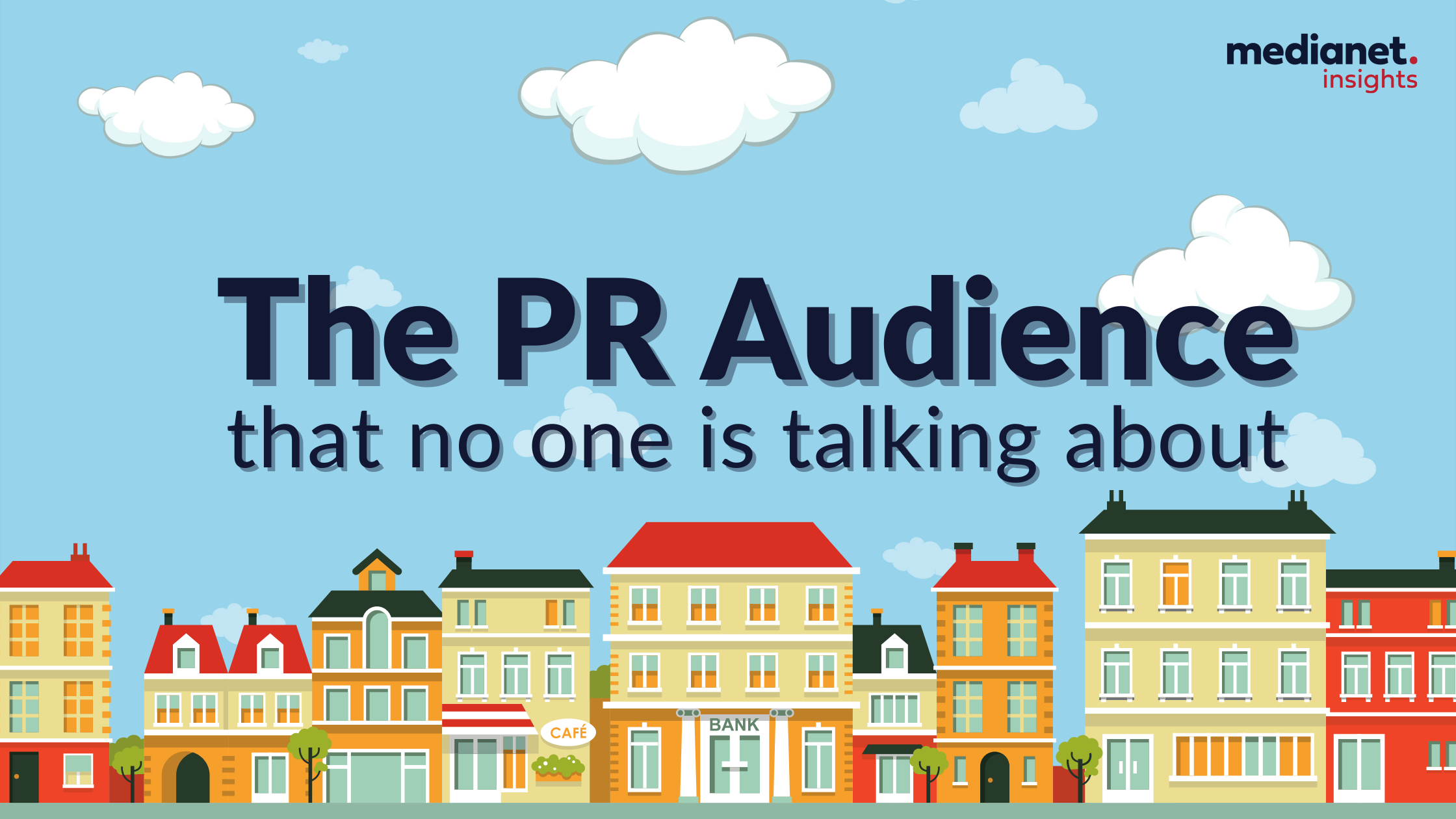The PR audience that no one is talking about

By now I’m fairly certain that you’ve done a significant amount of audience research. Maybe you’ve even interviewed your best or ideal audience to develop rich persona cards which you use to tailor your PR and marketing engagement.
With all this time spent researching and identifying your ideal audience, is it possible that you missed something? Something that’s been right in front of you all along?
Journalists.
For any PR campaign to be successful and generate media coverage, it must first engage and capture the attention of journalists. After all, there won’t be a story if a journalist isn’t interested.
So, this is the audience that no one is talking about, and we’re going to talk about it.
The journalist audience and media landscape
Journalists might not be your typical consumer or even a target audience for your campaigns, but they are important stakeholders in spreading awareness of the message you are trying to share.
Like any audience, it’s important to know what your ideal journalist looks like. What type of journalist is most likely to be interested in what you have to say?
You can start by asking yourself some simple questions such as:
-
What type of media does the journalist write for?
-
What subjects or topics does the journalist write about?
-
What sentiment does the journalist have about the subjects or topics related to your message?
Once you have a basic understanding of the type of journalist you should be pursuing, it will be much easier to create an engaged audience that is happy to share your message.
Helpful tools and resources to understand the journalist audience
Of course, knowing what you want to find out is only half the battle. You’ll still need to do your own research to truly understand your audience.
Luckily there are many tools and resources that already exist to help you better understand the journalist audience and media landscape. Here’s a few to help you get started:
-
Medianet’s 2023 Media Landscape Report [FREE]
This report was generated from the responses of 1,000 Australian journalists to get their insights into the state of the media landscape and help PR professionals better understand the journalist audience. You can find the report here.
-
Journalism, media, and technology trends and predictions 2023 - a global report by the Reuters Institute
Another great resource for understanding how journalism is changing in 2023 on a global scale with several events in 2022 impacting or shaping the future of the industry (including Elon Musk’s takeover of Twitter). Read more here.
-
Journalist Pulse Report
Similar to the Media Landscape Report, the Journalist Pulse Report also takes insights from the responses of journalists with one key difference, the questions and journalists interviewed are all tailored to your own organisation. This can be very helpful in not only building your ideal journalist audience, but also adjusting your PR strategy based on the understanding and impressions of journalists. You can find out more here.
-
Media Stable’s #MeetTheMedia events and The Experts Podcast
Media Stable offers a range of events and a free podcast which both aim to help PR professionals better understand journalists and even get face-to-face with the decision-makers in Australian media. You can explore the podcast further here.
-
It’s PR Darlings Podcast
This is another great podcast that explores the Australian media through the lens of PR. Rich interviews with a variety of journalists give you a deep understanding of how they operate and even highlight a couple of pitching opportunities. You can find the podcast here.
-
Australian Government resources on Media, Communications & Art
While not directly associated with understanding the journalist audience, the Australian Government website has several resources to help understand the policies and regulations that shape the media landscape in Australia. Find out more here.
Audience targeting
Effectively targeting your PR to journalists can be a whole topic in itself, but let’s keep it brief.
There are 2 approaches that you can take;
-
Taking a wide-reach approach to target as many relevant journalists as possible, or
-
Taking a targeted approach to reach a small, highly engaged and relevant audience.
A wide-reach approach to targeting journalists
.png?width=2240&height=300&name=Insights%20%20The%20audience%20no%20one%20is%20talking%20about%20(2240%20%C3%97%20300px).png)
This approach is most effective when you either have a big/breaking story or a story with a wide appeal.
The goal here is to create a large audience list filtered by a few key criteria, such as the subjects a journalist covers or the media channel they publish to, to spread your message as wide as possible.
You can utilise generic tools such as Mailchimp to send out your pitch or specific PR tools such as Medianet to build your audience and distribute your pitch to them.
Taking a targeted approach
%20(1).png?width=2240&height=300&name=Insights%20%20The%20audience%20no%20one%20is%20talking%20about%20(2240%20%C3%97%20300px)%20(1).png)
A targeted approach is often the most preferred by PR professionals and journalists alike.
Unlike a wide-reach approach, your goal here is to build a two-way relationship with a few journalists to support them in creating stories while also having a direct line to pitch your own stories. There are many ways to go about creating these relationships, but it’s important to be open and to make sure you're also providing value to the journalist, not just yourself.
Here’s a simple approach you can take to get started.
-
Start by doing some research to shortlist a few journalists that might be interested in your pitch/story. This can be done by either manually looking for stories related to the subjects relevant to your organisation and noting down the author, or by using a Media Contact Database to narrow down your search.
-
Start engaging with the Journalist’s content. Read their stories, comment and like where applicable and start generating your own presence.
-
Get in contact with the journalist. Find a reason to get in touch with the journalist and use the opportunity to introduce yourself and a potential story, but keep it brief.
-
Once you’ve established a basic relationship, make the effort to support the journalist where you can (i.e. if they are looking for an industry expert or story source) and pitch any stories you have that are relevant to the journalist. Be sure not to repeat a pitch unless you really have to. If you do, offer a new angle for the journalist to consider or even new media (images and videos).
A third approach
%20(2).png?width=2240&height=300&name=Insights%20%20The%20audience%20no%20one%20is%20talking%20about%20(2240%20%C3%97%20300px)%20(2).png)
Of course, one approach doesn’t necessarily fit everyone’s needs. It might be more effective for you to take a combined approach by utilising both methods to get your message spread. This can be very effective when you’ve already established a relationship with a couple of journalists and utilise the wide-reach approach to generate extra coverage.
A closing thought
Targeting journalists is a crucial aspect of PR campaigns that should not be overlooked. By understanding your ideal journalist audience and their interests, you can create an engaged audience that is more likely to share your message.
With a little bit of research and relationship-building, you can create valuable relationships with journalists that will lead to increased media coverage and success for your PR campaigns. Remember, journalists are key stakeholders in spreading awareness of the message you are trying to share.
Hopefully, by now you've seen the importance of understanding the journalist audience before launching a PR campaign. So now it's time to learn what journalists know and think about your organisation or industry. Start by exploring our Journalist Pulse Report here.




